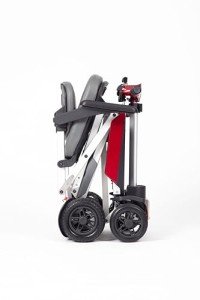Understanding Mobility Devices: Enhancing Independence and Quality of Life
In today's fast-paced world, the desire for mobility is universal. Nevertheless, specific medical conditions or age-related challenges can prevent movement, resulting in a continuous look for support. Mobility devices serve as essential tools to enhance independence, improve quality of life, and allow individuals to engage totally in their communities. This article supplies a thorough summary of mobility devices, including their types, features, choice requirements, and more.
Kinds Of Mobility Devices
Mobility devices range from simple aids to complex devices, tailored to fulfill various needs. Below is a table summing up common types of mobility devices:
| Type of Device | Description | Suitable For |
|---|---|---|
| Walkers | Four-legged support devices that provide superior stability while walking. | People needing extra assistance. |
| Walking sticks | Single or three-legged sticks that improve balance and assistance walking. | Those with small mobility troubles. |
| Wheelchairs | Seats mounted on wheels, offered in handbook and electric variations. | People with limited or no mobility. |
| Scooters | Electric automobiles developed for outside use and ease of navigation. | Those who can't walk fars away. |
| Crutches | Devices that assist people move weight away from an injured leg. | Individuals recovering from leg injuries. |
| Rollators | Walkers with wheels, seats, and brakes for boosted mobility. | Users requiring rest choices while strolling. |
| Lift Chairs | Reclining chairs that assist users in standing and taking a seat. | Seniors or those with mobility restraints. |
| Mobility Scooters | Small electric automobiles for minimal mobility, typically used outdoors. | People requiring help over fars away. |
Key Features of Mobility Devices
When choosing a mobility device, a number of key features must be considered to guarantee optimal functionality and ease of usage:
- Weight Capacity: Understanding the device's weight restriction is essential for security and efficiency.
- Adjustability: Devices ought to be adjustable in height and width to fit the user conveniently.
- Mobility: Lightweight and foldable options are vital for users who travel or need transport.
- Stability and Safety: Look for functions like anti-tip wheels and durable structures to improve security.
- Reduce of Use: Simple systems and user-friendly styles can make a significant difference in daily usage.
- Convenience: Ergonomic designs and cushioned seats can boost the user experience.
Selecting the Right Mobility Device
Selecting the ideal mobility device can be a difficult task. Here are some actions to assist the decision-making procedure:
- Assess Needs: Evaluate the individual's mobility difficulties and daily activities.
- Speak with a Professional: Engage healthcare specialists who can supply recommendations based on the person's physical condition.
- Trial Options: If possible, trial various devices to figure out convenience and performance.
- Evaluation Budget: Consider the cost of the gadget, consisting of any extra functions or modifications required.
- Research Options: Determine the best brand names and models by checking out reviews and comparisons.
Table: Comparative Analysis of Popular Mobility Devices
| Device | Advantages | Downsides |
|---|---|---|
| Walkers | Excellent stability, promotes walking. | Large, might limit motion in small spaces. |
| Walking canes | Lightweight, improves balance. | Might not offer sufficient assistance for severe mobility problems. |
| Wheelchairs | Ideal for those with significant mobility limitations. | Can be troublesome, specifically in indoor environments. |
| Scooters | Great for outside usage, easy to maneuver. | Restricted indoor use, heavier. |
| Rollators | Offers rest choice, simple to move. | May require more space than conventional walkers. |
| Raise Chairs | Comfy, helps transition from sitting to standing. | More expensive, larger footprint. |
Regularly Asked Questions (FAQs)
1. What is a mobility gadget?
A mobility device is any tool created to assist people in moving and navigating their environment. This includes walkers, wheelchairs, scooters, and crutches.
2. How do I know which mobility device is best for me?
Consider your specific mobility difficulties, physical capabilities, and way of life requirements. Consulting with healthcare specialists can likewise offer tailored recommendations.
3. Are mobility devices covered by insurance coverage?
Lots of insurance coverage strategies, including Medicare, might cover specific mobility devices. best folding scooters to consult your insurance coverage provider for particular protection information.
4. Can I lease a mobility device instead of purchasing one?
Yes, numerous medical supply stores and pharmacies provide rentals for mobility devices. This choice is helpful for people with temporary mobility problems.
5. How can I preserve my mobility gadget?
Regular upkeep is crucial. It consists of cleaning the gadget, looking for wear and tear, and guaranteeing all parts are functioning properly.
The Impact of Mobility Devices on Quality of Life
Mobility devices considerably improve the quality of life for individuals with restricted mobility. They foster independence, motivate social interaction, and improve access to important services and leisure activities.
- Increased Independence: Users can navigate their neighborhoods, attend occasions, and engage in pastimes without counting on others.
- Social Engagement: Mobility devices assist in involvement in social gatherings, thereby combating sensations of seclusion.
- Enhanced Safety: Devices supply stability and lower the danger of falls, promoting user confidence.
Mobility devices are more than just tools for motion; they are gateways to self-reliance and quality living. By comprehending the various kinds of mobility aids available, their key functions, and considerations for choosing the best device, individuals can make informed decisions about their mobility needs. Ultimately, the right mobility gadget can lead to a more active, fulfilling life. Whether it's a walker, wheelchair, or scooter, the best choice contributes considerably to enhancing the mobility and independence of users.

